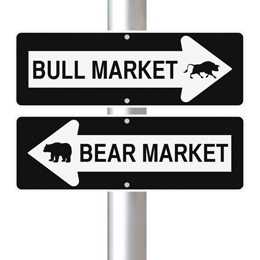High yield plays a supporting role
by Matt Tucker, CFA, Head of Fixed Income, Blackrock
Matt Tucker takes a closer look at a key reason of holding high yield bonds in a portfolio.
In a recent post my colleague Russ Koesterich talked about the role of fixed income in a portfolio. It was a good reminder of why most of us invest in bonds: to help provide diversification against our equity holdings. Historically, when equities are down, Treasury bonds are often up. And when equities are up, Treasuries are often down. This creates diversification in a portfolio. The value of your investment doesn’t move around as much, which gives you a better idea of how much it’d be worth in the future. The fewer surprises, the better, so to speak.
Part bond, part stock?
Russ’s comments were focused on U.S. Treasury securities. But I want to extend the conversation and talk about another fixed income sector, high yield bonds. High yield bonds are interesting because they have some properties of Treasury bonds, and some properties of equities. They are typically structured like other bonds with regular coupon payments and a return of principal at maturity. They also have sensitivity to interest rates, so as interest rates rise, the value of a high yield bond can decline, and vice versa.
Of course, the coupons paid by high yield bonds are generally higher than what Treasury bonds of similar maturity would pay. The extra yield is compensation for taking on credit risk when you lend your money to the bond issuer. Like equity, the value of a high yield bond is tied to the fate of its corporate issuer. When a bond issuer is doing well, generally its stocks and bonds go up in value. But when hard times hit an issuer, its stock and bond values tend to decline. So in many ways, high yield is somewhat of a hybrid of Treasuries and equities: It has properties of both but isn’t exactly like one or the other.
The graph below shows the performance of Treasuries, equities and high yield over the past year. I normalized the returns to start at 100 for an easy comparison.
As you can see, the Treasury market just jogged along, rising slightly but not fluctuating too much. This is a reflection of the lower volatility of Treasuries. Equities moved around the most, whipping down and then back up in response to market sentiment. High yield was somewhere in the middle. For the most part it tracked equities down, but without the same level of volatility.
The trends are more obvious if you look at a longer horizon, as Bloomberg data shows. For longer time periods, we find that Treasuries and equities have a low to negative correlation to each other, meaning when one is up, the other tends to be down. With high yield, we find a low level of correlation with Treasuries, and a medium level of correlation with equities. High yield hasn’t given you quite the diversification against equities that Treasuries have, but it also hasn’t moved in lockstep with stocks either.
A supporting role
High yield can be a source of income and diversification in a portfolio, but don’t expect it to be your ballast against equities. Always keep moderation and diversification in mind. High yield in my opinion is used more effectively as a complement to a core bond position: A potential yield tilt that can help boost income without compromising that diversification benefit investors look for in bonds.
Matt Tucker, CFA, is the iShares Head of Fixed Income Strategy and a regular contributor to The Blog.
Copyright © Blackrock














